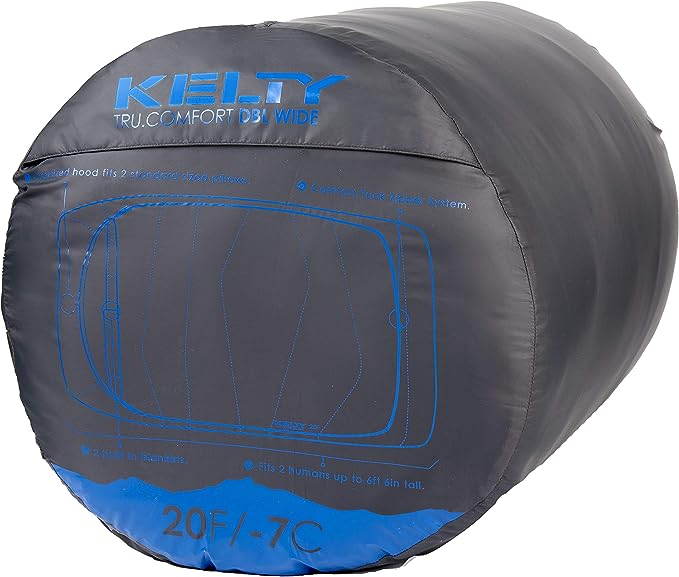Whether you’re a seasoned camper or a beginner, properly folding and storing your sleeping bag is essential for its longevity and your future comfort. We will walk you through the step-by-step process of folding a sleeping bag, discuss the pros and cons of folding versus stuffing, and shed some light on the reasons why rolling might not be the best approach. So, grab your sleeping bag and let’s dive into the world of efficient and effective sleeping bag storage!
Introduction

A sleeping bag is an essential piece of gear for any camper or outdoor enthusiast. It provides warmth and comfort during those chilly nights under the stars. However, when it comes to packing up and storing your sleeping bag, folding it properly is crucial to ensure its longevity and keep it in good condition for future use. We will guide you through the steps on how to fold a sleeping bag.
Step 1: Lay the Sleeping Bag Flat
The first step in folding a sleeping bag is to lay it flat on a clean and dry surface. Make sure there are no rocks, twigs, or any other sharp objects that could potentially damage the fabric of the sleeping bag.
Step 2: Zip up the Sleeping Bag
Before you start folding, it is important to zip up the sleeping bag completely. This will prevent the inner insulation from shifting or getting tangled during the folding process.
Step 3: Fold the Sleeping Bag Lengthwise
Next, fold the sleeping bag lengthwise in half. Bring the foot end of the sleeping bag up to meet the head end, aligning the edges as best as you can. This will create a long and narrow rectangle.

Step 4: Roll the Sleeping Bag
Now, starting from the foot end, tightly roll the sleeping bag towards the head end. Keep the roll as tight and compact as possible to minimize its size when packed.
Step 5: Secure with Straps or Stuff Sack
Once the sleeping bag is rolled up, you can secure it using the attached straps or a separate compression stuff sack. This will prevent it from unraveling and make it easier to transport.
By following these steps, you can easily and efficiently fold your sleeping bag. Properly folding your sleeping bag not only saves space but also helps maintain the insulation and loft of the bag, ensuring its performance and longevity for many outdoor adventures to come.
How Do You Fold a Sleeping Bag Down?

A sleeping bag is an essential item for outdoor camping or backpacking trips. It provides warmth and comfort during the night, ensuring a good night’s sleep in the great outdoors. However, when it comes to packing up and storing your sleeping bag, many people find themselves struggling with the task of folding it down.
Folding a sleeping bag properly can help maximize storage space and keep it in good condition for future use. Here are a few steps to guide you on how to fold a sleeping bag down:
- Empty the bag: Before starting the folding process, ensure that the sleeping bag is completely empty. Shake out any dirt, debris, or loose items that may have accumulated inside.
- Start from the bottom: Lay the sleeping bag flat on the ground, zipper side down. Begin folding from the bottom end towards the top, ensuring that any excess air is released as you fold.
- Roll it up: Once you have folded the sleeping bag into a long, narrow rectangle, begin rolling it up tightly from the bottom end. This will help remove any remaining air and compress the bag for easier storage.
Folding a sleeping bag can be a bit tricky for beginners, but with practice, it becomes easier. Remember to always follow the manufacturer’s instructions for folding and storing your specific sleeping bag model. Properly folded and stored sleeping bags will last longer and be ready for your next adventure.
Should You Fold or Stuff a Sleeping Bag?

When it comes to storing a sleeping bag, one common question that often arises is whether you should fold or stuff it. The answer to this question depends on several factors, including the type of sleeping bag you have and the space you have available for storage. Let’s take a closer look at the pros and cons of both folding and stuffing a sleeping bag.
Folding a Sleeping Bag:
One of the main advantages of folding a sleeping bag is that it helps to keep it neat and organized. When properly folded, a sleeping bag can be easily stored in a backpack, storage bag, or any other designated space. Folding also helps to prevent creases and wrinkles, which can prolong the lifespan of your sleeping bag. Additionally, folded sleeping bags are often easier to carry and transport, especially when hiking or camping.
In contrast, there are a few drawbacks to folding a sleeping bag. Firstly, folding a sleeping bag requires some skill and practice to ensure it is folded correctly. If not folded properly, it can result in compressions or damage to the insulation, affecting its overall performance and warmth. Secondly, folding a sleeping bag can take up more space than when it is stuffed. If space is limited, folding may not be the most practical option.

Stuffing a Sleeping Bag:
Stuffing a sleeping bag is a quick and convenient method of storage. It involves simply stuffing the sleeping bag into its designated storage bag or stuff sack. This method is particularly useful when space is limited, as it allows you to compress the sleeping bag to a smaller size. It also requires less time and effort compared to folding.
However, there are a few downsides to consider when choosing to stuff a sleeping bag. Firstly, stuffing a sleeping bag can cause the insulation to become compressed over time. This compression can reduce the loft and insulating properties of the sleeping bag, making it less effective in keeping you warm. Secondly, stuffing a sleeping bag can make it more difficult to find and organize other gear in your backpack or storage space, as it may create bulk and take up more room.
So, should you fold or stuff your sleeping bag? Ultimately, the decision depends on your specific needs and preferences. If you value organization, cleanliness, and have enough storage space, folding may be the better option for you. On the other hand, if you prioritize convenience, portability, and space-saving, stuffing your sleeping bag may be the way to go. Consider the pros and cons of each method and choose the one that best suits your circumstances. Regardless of your choice, remember to properly care for and maintain your sleeping bag to ensure its longevity and optimal performance.
Why Aren’t You Supposed to Roll a Sleeping Bag?

A sleeping bag is an essential item for any camper or outdoor enthusiast. It provides warmth and comfort during those chilly nights under the stars. But have you ever wondered why you are always told not to roll your sleeping bag? We will explore the reasons behind this age-old advice and why it is important to fold your sleeping bag instead.
Firstly, rolling a sleeping bag can cause damage to the insulation and fabric. When you roll a sleeping bag, the insulation inside gets compressed in certain areas, while other areas get overstretched. This can lead to uneven distribution of insulation, which in turn affects the overall performance of the sleeping bag. Over time, the repeated rolling can cause the insulation to break down and lose its ability to retain heat.
Secondly, rolling a sleeping bag can also lead to the formation of creases and wrinkles in the fabric, especially if it is made of synthetic materials. These creases can weaken the fabric and make it more susceptible to tears and rips. Moreover, the tight rolling can put unnecessary stress on the seams, further increasing the risk of the bag coming apart.

So, how should you fold your sleeping bag instead?
- First, start by laying the sleeping bag flat on the ground or a clean surface.
- Next, fold the sleeping bag in half lengthwise, bringing the two ends together.
- Then, fold it in half again, this time folding it widthwise.
- Continue folding until the sleeping bag is in a compact rectangular shape.
- Once folded, place it in a proper storage bag or stuff sack designed specifically for sleeping bags.
By folding your sleeping bag using the above method, you can ensure that the insulation remains evenly distributed and the fabric stays in good condition. This will not only prolong the lifespan of your sleeping bag but also maintain its performance over time.
In conclusion, rolling a sleeping bag may seem like a convenient way to pack it up, but it can cause significant damage in the long run. To fully enjoy the benefits of your sleeping bag and ensure its longevity, make sure to fold it properly using the recommended method. Happy camping!




